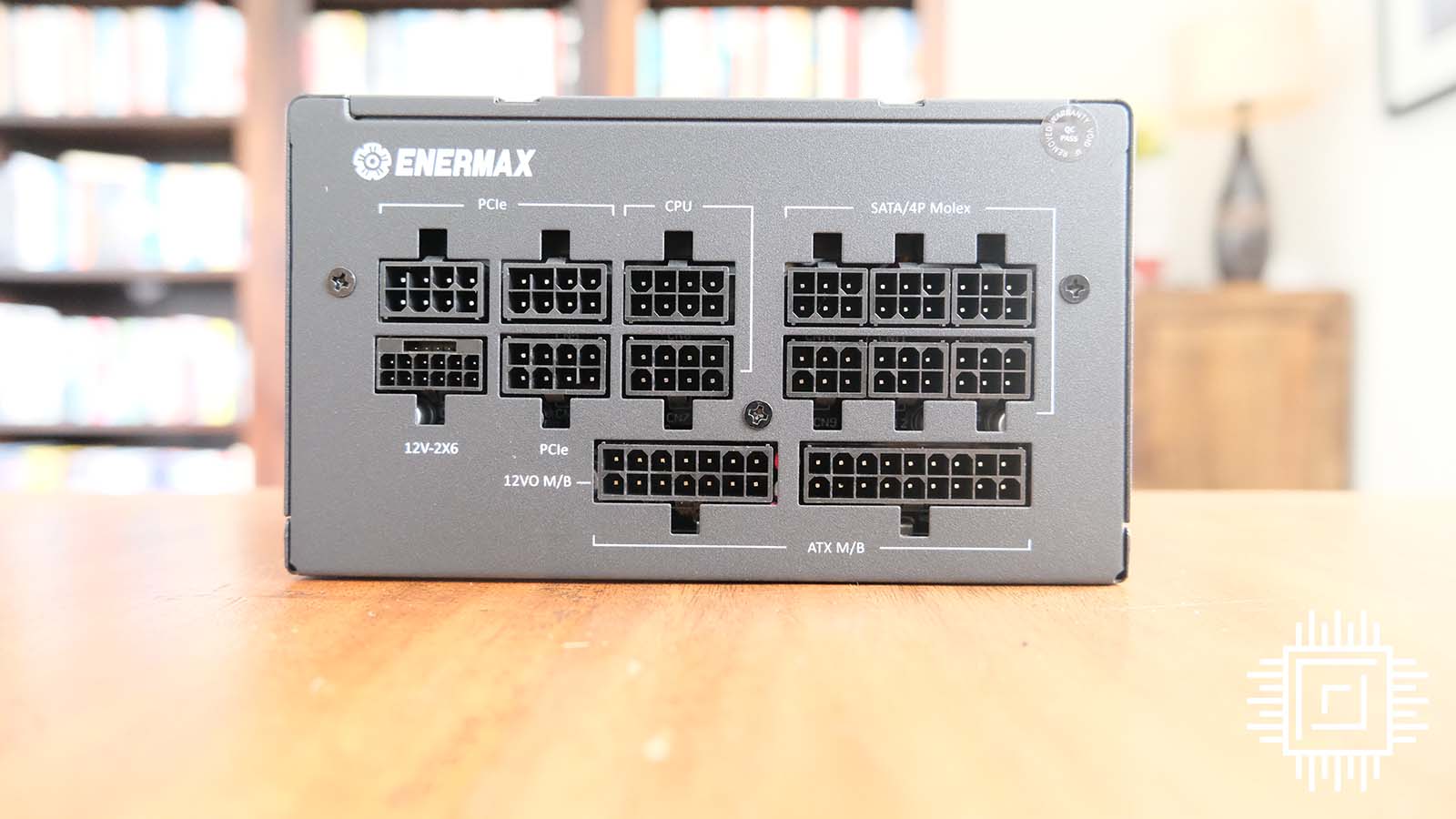Power supplies haven’t changed all that much in the 20 or so years I’ve been looking at them with my critical reviewer’s eye. Their immutable job is to provide steady power to your PC’s components by converting incoming mains AC current to PC-compatible DC. High-end supplies are remarkably good at doing so, losing fewer than five per cent efficiency while creating barely any noise. Moving the needle on from time to time, Intel often instigates minor PSU advancements in the name of simpler design. Jumping on the nascent ATX12VO standard, Enermax is coming along for the ride with the all-new £250/$250 PlatiGemini 1,200W.
Underscoring this notion of efficiency through elegance, Intel published the ATX12VO specification in 2019. Though the name provides an inkling, the devil is in the details. Unlike regular power supplies that convert DC voltage down to 12V, 5V, and 3.3V and then feed it to the required components on a motherboard through a bunch of connectors, an ATX12VO provides only the 12V.
The key is compliant motherboards carry the necessary gubbins to convert it into 5V and 3.3V as they see fit. Following this path, any ATX12VO PSU is simpler in design as there’s no DC-to-DC conversion taking place internally, making it cheaper to produce. Furthermore, cabling can be thinner because 5V and 3.3V pins aren’t required from the PSU side. Sounds like a winning combination if there’s enough critical mass behind the initiative.
Irrespective of how and where minor PSU rails are configured, the main drive of ATX12VO supplies is in pushing efficiency higher across the load spectrum. It’s a necessary job as governments demand ever-stricter PSU requirements. Intel wants to get ahead of the game and needs broad support from motherboard and PSU manufacturers.
It’s been slow going on both fronts, however, and you can certainly understand the lethargy from a motherboard maker’s point of view. Shifting the rail-conversion burden from the PSU to the board incurs extra circuitry and expenses, which is an issue in a competitive market. This is why we see so few consumer boards touting ATX12VO, though they’re beginning to proliferate in the workstation and OEM markets where bespoke-designed boards are more prevalent.
Nevertheless, progress is a good thing, and Enermax has teamed up with Intel to launch the world’s first 80 Plus Platinum PSU with the ATX 3.1 and ATX12VO standards. Enter the PlatiGemini 1,200W.
Look and Feel
Available only in this enthusiast capacity, PlatiGemini looks much like any other modern PSU – and so it should. Headline specifications offer superb efficiency, a semi-fanless mode where the 135mm fan doesn’t turn on until an impressive 60% of load, a 600W 12V-2×6 connector for high-performance Nvidia graphics cards, and enough horsepower to drive workstation motherboards touting multiple GPUs.
Perhaps an allusion to the Gemini name, the PSU is a hybrid of sorts. The gold standard for ATX12VO supplies is having a single 10-pin 12V power connector snaking away from the unit and to a compatible motherboard. Knowing such boards are few and far between, Enermax covers itself by also having six SATA/MOLEX connectors on the top-right.
In a full-on ATX12VO PSU, mind you, the SATA connectors simply won’t be used or even present, and you’d only connect the bottom-left ATX M/B portion. For most instances in 2024, though, you’d persevere with the 24-pin connector, meaning both left- and right-hand ports are occupied. It’s a case of either/or.
PlatiGemini looks and feels like a regular premium power supply. Should you happen to own an ATX12VO motherboard – and it’s worth repeating a few are around – then the bundled 10-pin connector effectively replaces the traditional bulky 24-pin. Enermax is saying have it your way. It’s clear to me that Intel and Enermax have worked on this model with the desire to invigorate this fledgling standard that, until now, has failed to gain significant traction outside of enclosed solutions like the Intel Ghost Canyon NUC.
Looking at it from the glass-half-full perspective, however, there are no obvious downsides to Enermax’s approach. It’s great for today because it functions as a decent 80 Plus Platinum PSU, and it’s ready for tomorrow should ATX12VO become more commonplace.
In fact, I view the ATX12VO as akin to the 12V-2×6. You don’t strictly need it, but it’s nice to have. For those who care, Enermax teams up with RSY to build out the PSU. Internal examination reveals a full-bridge design underscored by the use of quality filtering and rectifying. It’s no wonder, then, that it’s backed by a ten-year warranty.
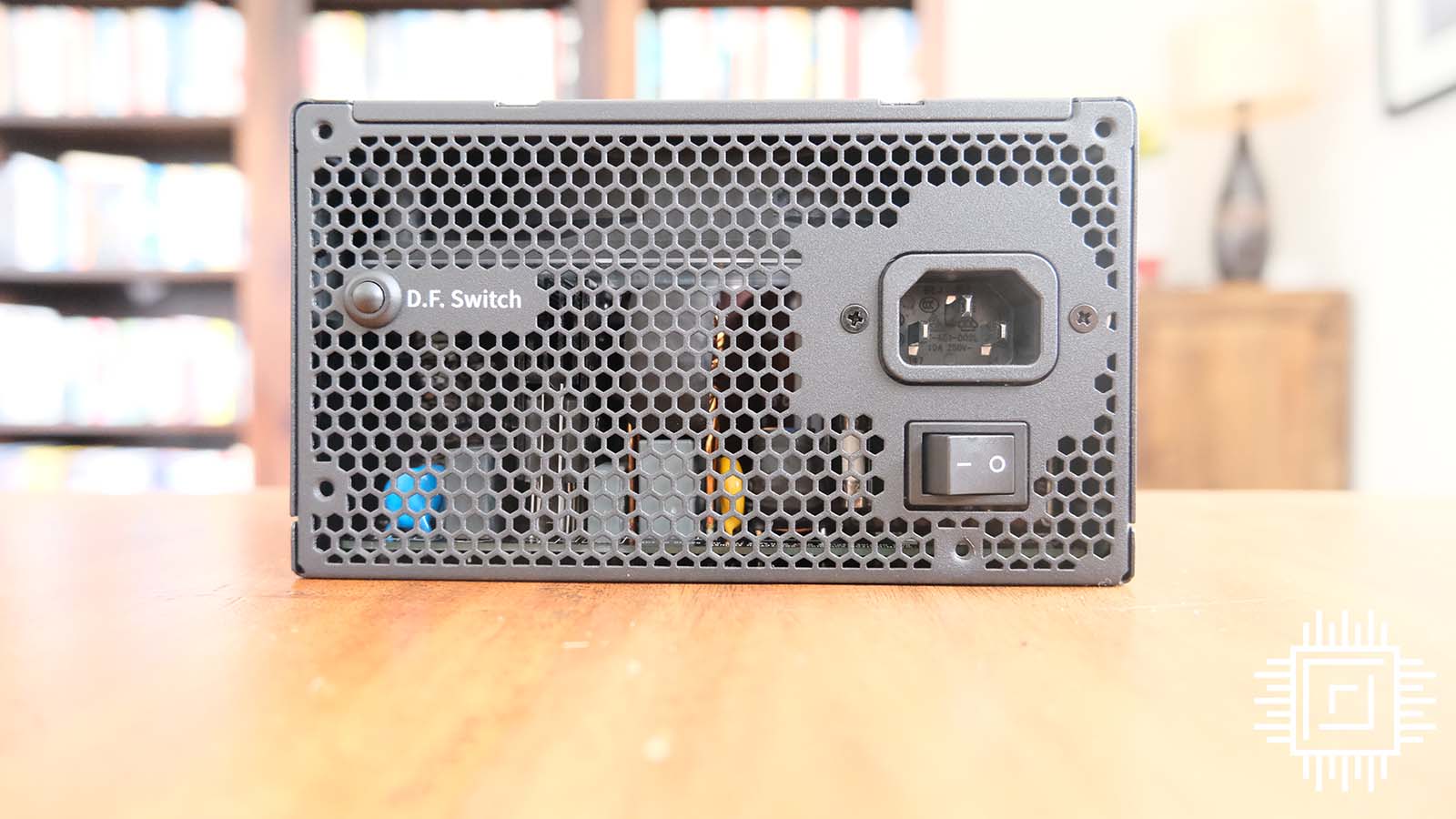
There are other niceties, too. A so-called dust-free rotation button on the back activates a self-cleaning technology that expels dust through instant reversal fan spin when the system is powered on. I like pressing it just for sheer kicks. Nevertheless, it’s difficult for me to ascertain how well it works in the long run, but it does make implicit sense.
Build quality is thoroughly good on the 1,750g unit. There’s no side-lit RGB, a la the D.F.X, but that’s no bad thing in my book. It’s also relatively compact at just 150mm deep.
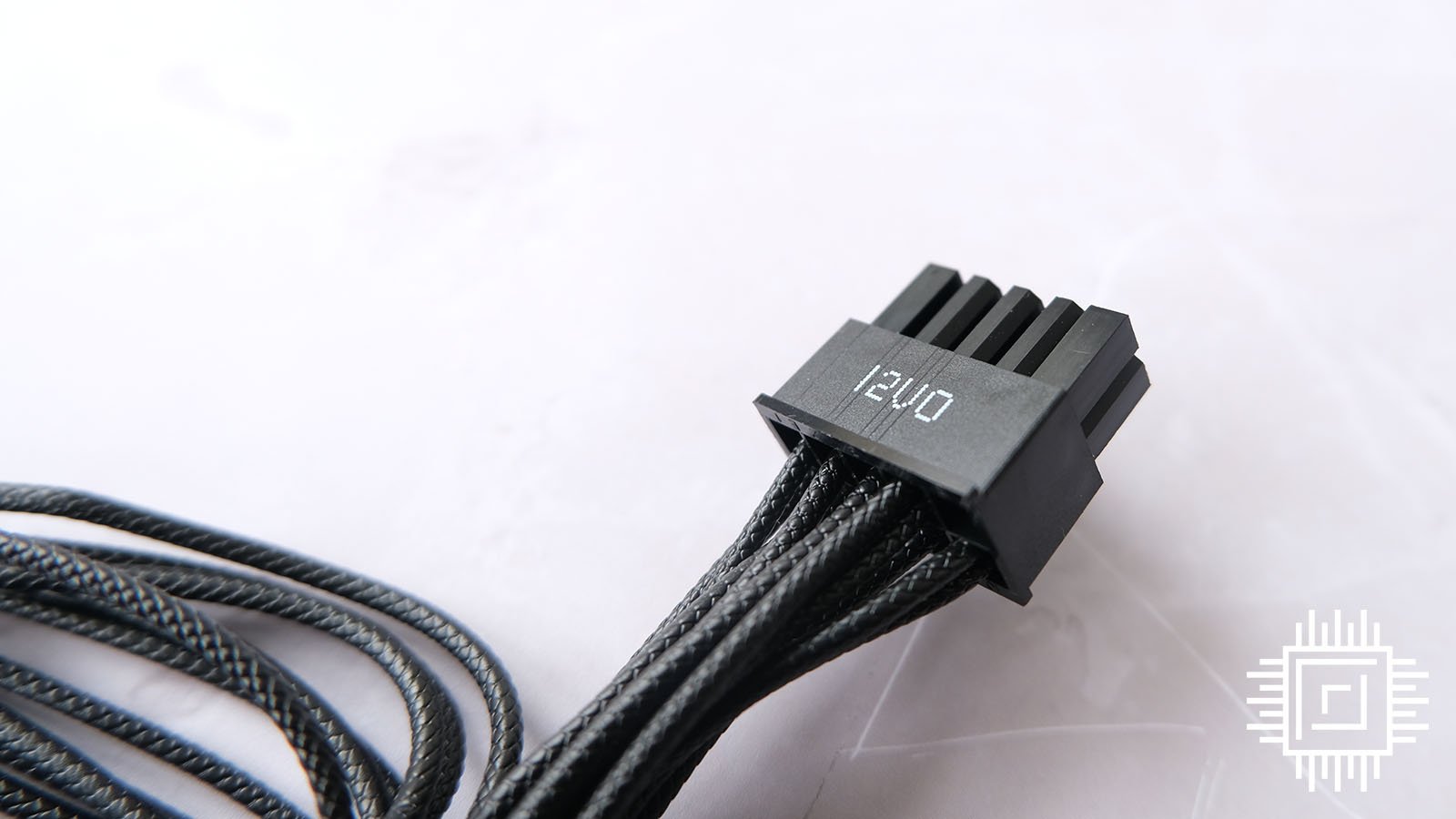
I like the touch, feel, and flexibility of the mesh-sleeved cables. The regular 24-pin, new-fangled ATX12VO 10-pin connector, 12V-2×6, and a trio of PCIe 6+2 connectors are all 60cm long, while dual 8-pin CPUs offer an extra 10cm. I’m not perturbed by having only three PCIe 6+2, by the way, as the single 12V-2×6 makes up for the shortfall. Enermax does the right thing by including cable combs in the package.
Standard mode means potentially having to use additional runs of SATA and MOLEX, of which Enermax provides eight and four, respectively. All told, cabling is sensible for a 1,200W enthusiast-grade power supply.
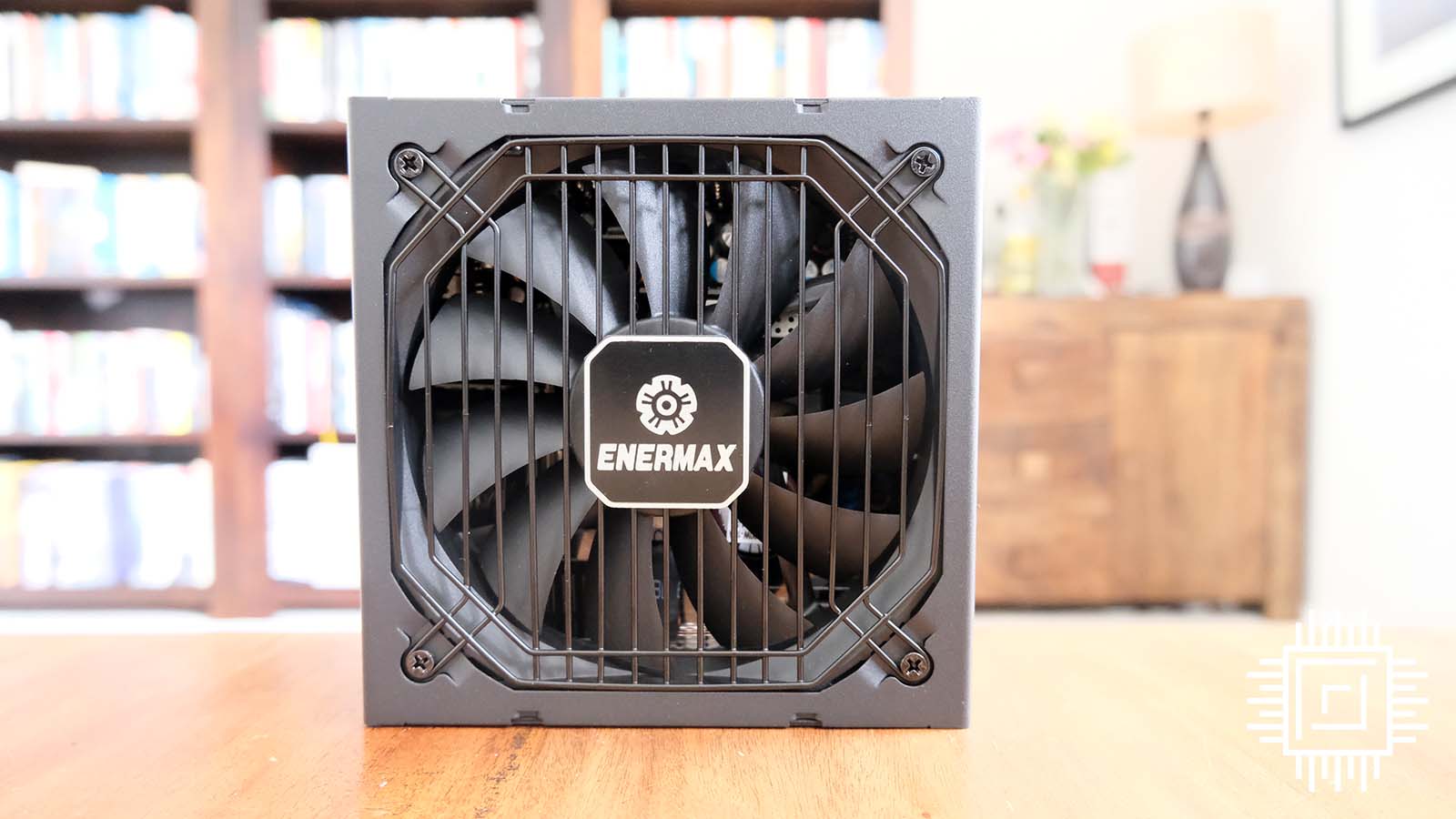
Given the ability to run ATX12VO, PlatiGemini houses a single 12V rail capable of delivering the full 100A down the wire. Should you need to use 5V and 3.3V, there’s 20A available on each. Thinking it through, I’m actually a potential customer for this kind of supply, motherboard permitting, as I don’t use SATA or MOLEX in my main build.
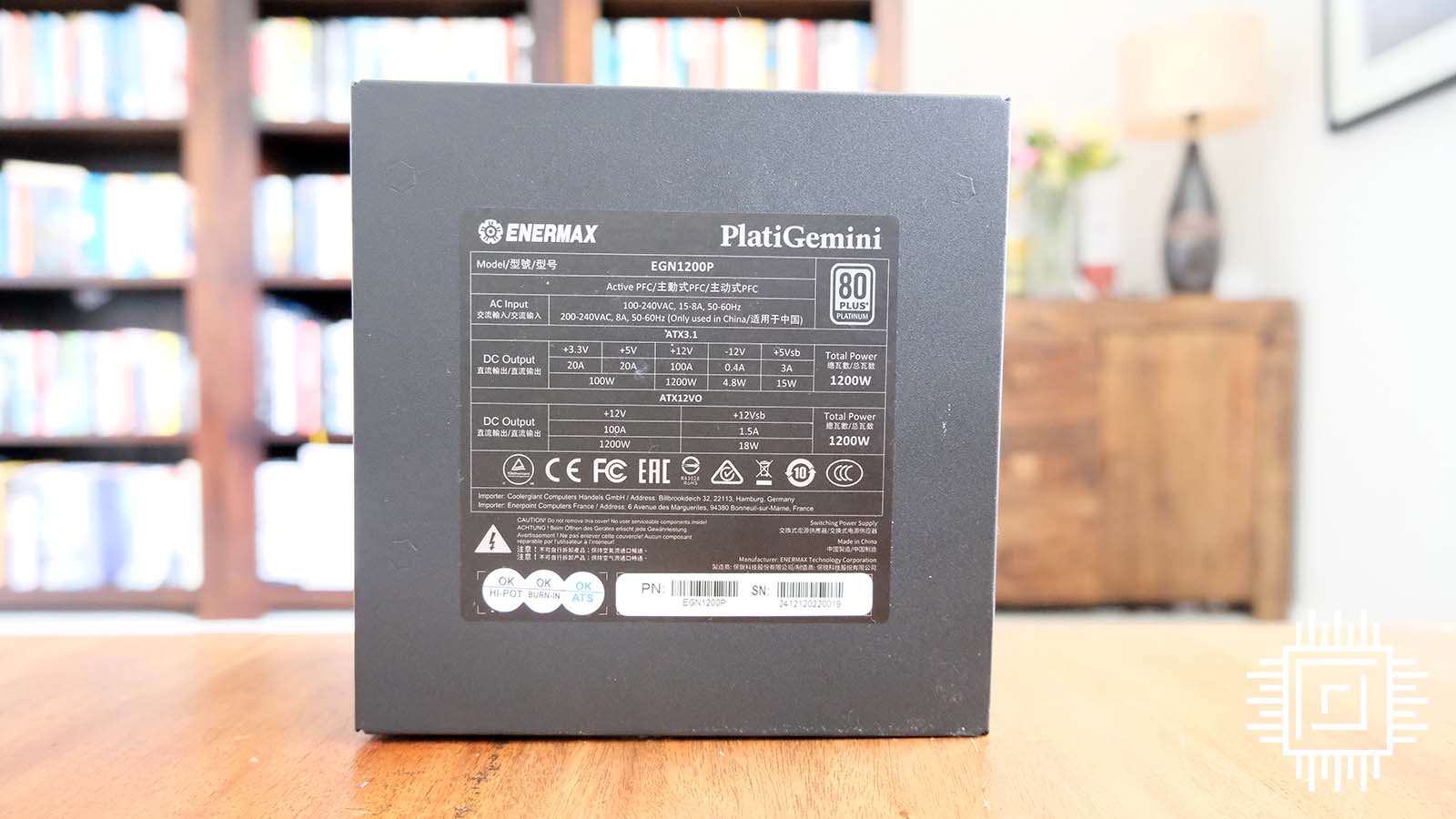
The Club386 Chroma PSU-testing load mainframe doesn’t accept the ATX12VO connector as a source. Rather, I need to plug in the regular 24-pin cable and test the fundamentals in standard fashion. What follows is a sanity check compared to an 80 Plus Gold Enermax D.F.X 1,200W PSU reviewed previously.
Performance
12V regulation
| Wattage | PlatiGemini 1,200W | Revolution D.F.X 1,200W |
| 100W | 12.08V | 12.06 |
| 400W | 12.08V | 12.04 |
| 800W | 12.06V | 11.99 |
| 1,200W | 12.05V | 11.96 |
I’d expect top-notch voltage regulation from a high-quality supply. Enermax’s PlatiGemini doesn’t disappoint me in the slightest. There’s less than 0.3% deviation from 100W through to maximum capacity. Colour me impressed.
Wide-load efficiency
| Wattage | PlatiGemini 1,200W | Revolution D.F.X 1,200W |
| 100W | 92.3 per cent | 87.3 per cent |
| 400W | 95.5 per cent | 93.4 per cent |
| 800W | 95.9 per cent | 93.1 per cent |
| 1,200W | 94.6 per cent | 90.0 per cent |
80 Plus Platinum PSUs are all about not leaving any watt behind. PlatiGemini 1,200W is comfortably above 90% efficiency at workloads common on consumer PCs.
Low-load efficiency
| Wattage | PlatiGemini 1,200W | Revolution D.F.X 1,200W |
| 20W | 73.6 per cent | 72.2 per cent |
| 40W | 79.5 per cent | 78.0 per cent |
| 60W | 85.2 per cent | 83.5 per cent |
| 80W | 89.6 per cent | 86.0 per cent |
Examining low-load efficiency is equally important if, like us, your PC spends a vast amount of time idling. The latest Club386 test platform, for example, idles at just 65W.
12V ripple suppression
| Wattage | PlatiGemini 1,200W | Revolution D.F.X 1,200W |
| 100W | 5.8mV | 7.4mV |
| 400W | 7.5mV | 10.0mV |
| 800W | 9.4mV | 13.0mV |
| 1,000W | 14.8mV | 18.3mV |
Ripple is caused by converting mains AC to PSU DC, and having a low suppression figure is ideal. This is another fantastic set of results for the PlatiGemini, especially considering it doesn’t use ripple-reducing smoothing capacitors in the cables.
Noise
| Wattage | PlatiGemini 1,200W | Revolution D.F.X 1,200W |
| 100W | 29.5dB | 29.5dB |
| 400W | 29.5dB | 31.2dB |
| 800W | 34.8dB | 36.9dB |
| 1,000W | 40.0dB | 42.0dB |
By my reckoning, the fan switches on at around 500W which is way below the 60% (720W) cited by Enermax. Of course, the company qualifies the statement by indicating that ambient conditions play a large part in determining the switch-on figure. Nevertheless, I’d deem the noise output, or lack thereof, to be above average.
Temperature
| Wattage | PlatiGemini 1,200W | Revolution D.F.X 1,200W |
| 100W | 23°C | 23°C |
| 400W | 26°C | 26°C |
| 800W | 37°C | 37°C |
| 1,000W | 46°C | 46°C |
And it’s pretty cool into the bargain, though you should expect this from a high-efficiency model.
Conclusion
Enermax knows that impressive 80 Plus Platinum PSUs are commonplace. Thinking outside the box, the £250/$250 PlatiGemini 1,200W PSU ticks all the boxes you’d expect from a premium PSU, albeit with a twist. Though not widespread for now, the supply has specific support for Intel’s ATX12VO standard, enabling super-tidy cabling for small-form-factor PCs housing compliant motherboards. I can’t think of another supply quite like this one.
There are no obvious downsides to Enermax, including new-fangled support. In regular mode, with a 24-pin power cable attached, PlatiGemini 1,200W carries a robust number of connectors and features, so don’t think of it as a compromise in any sense.
If you’re in the market for an excellent PSU and have one eye on future developments in the motherboard space, the Enermax PlatiGemini 1,200W PSU is a great choice.
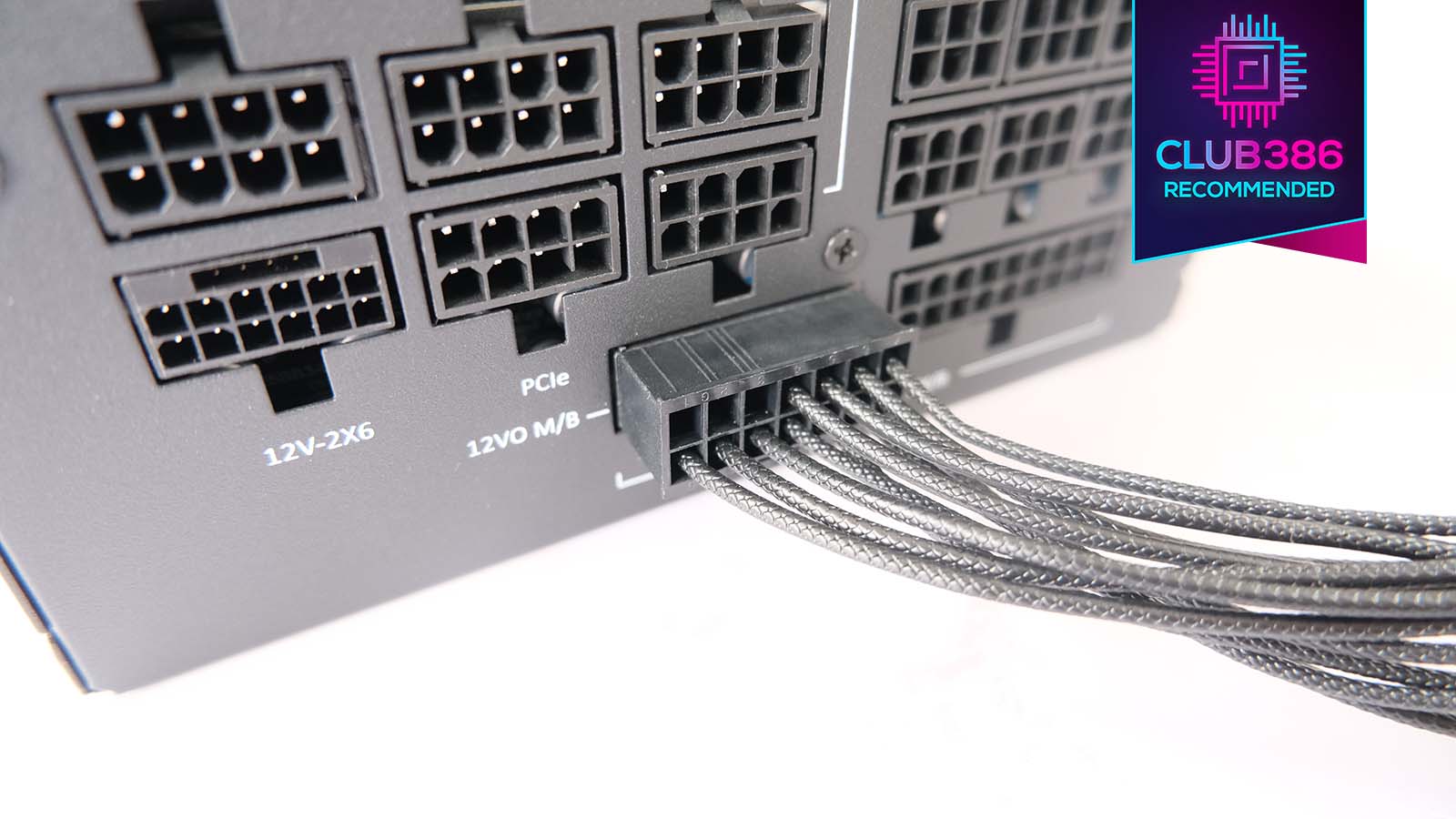
Enermax PlatiGemini 1,200W PSU
Verdict: A great PSU made unique by support for ATX 3.1 and ATX12VO.
Pros
Great performance
Unique
High efficiency
ATX12VO support
10-year warranty
Cons
Only 1,200W capacity
Buy
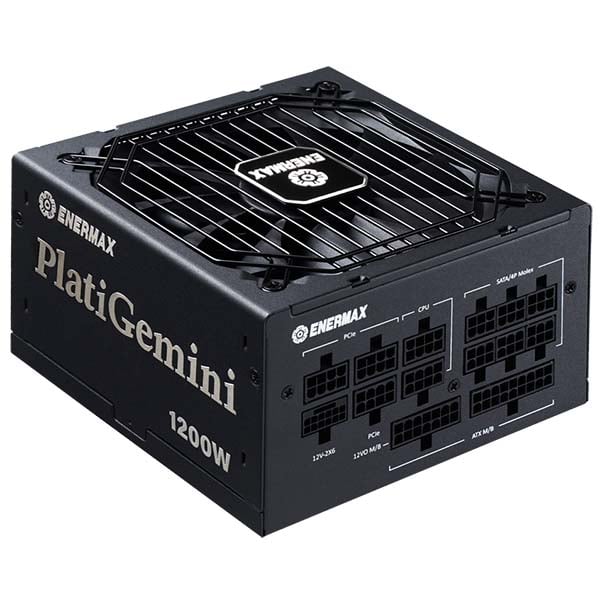
Club386 may earn an affiliate commission when you purchase products through links on our site. This helps keep our content free for all.
Rest assured, our buying advice will forever remain impartial and unbiased.
